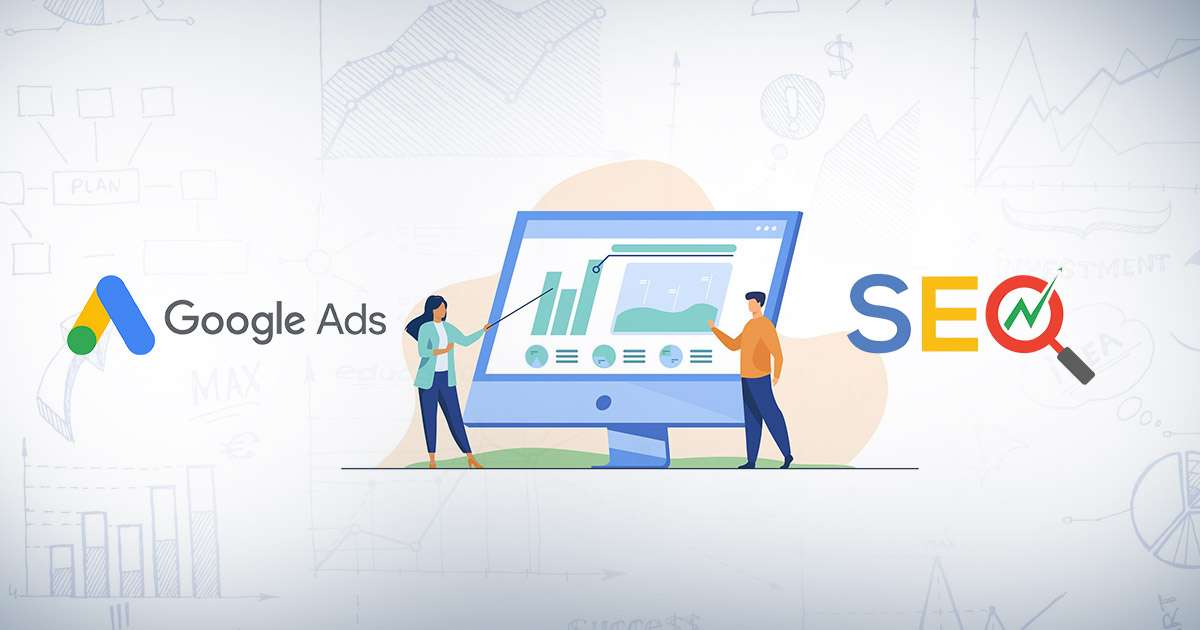Google Ads vs. SEO: Which Delivers Results Faster?

Both Google Ads and SEO play crucial roles in digital marketing, but they offer unique advantages and cater to different business needs. Understanding their strengths and limitations will help you decide which approach aligns better with your goals.
Short-Term Impact vs. Long-Term Growth
Google Ads is all about speed. As soon as you set up a campaign, your ads can start showing on the first page of search results, delivering instant visibility and traffic. This makes it ideal for businesses launching a new product, running a seasonal promotion, or targeting time-sensitive opportunities. However, these benefits come at a price—you pay for every click, and once your budget runs out, the traffic stops.
On the other hand, SEO is a marathon, not a sprint. By optimizing your website with relevant keywords, quality content, and technical improvements, you gradually build authority in search engines. This method takes time, often months, but the results are long-lasting. Once your site ranks high on Google, you can enjoy consistent traffic without paying for every visitor. It’s a strategy that rewards patience and effort with sustainable growth.
Costs and Budget Considerations
When comparing costs, the biggest difference lies in how you spend over time.
Google Ads
The entry cost is lower because campaigns can start with a small budget. You pay based on clicks or impressions, which gives you tight control over spending. However, as competition increases, especially for popular keywords, the cost per click (CPC) can climb significantly. Without careful planning, it’s easy to overspend without maximizing returns.
SEO
The initial investment is higher because you need to optimize your website, create engaging content, and maybe even hire SEO specialists. However, once the foundation is set, the ongoing costs are minimal. You’ll primarily focus on content updates and maintaining your site’s health. Over time, SEO becomes cost-effective as it drives organic traffic without recurring fees.
Both strategies have a place, but your choice depends on how much you’re willing to spend upfront versus over time.
Situational Advantages
Each approach shines under different circumstances.
Fast Results
Google Ads provides an edge when you need results now. A well-targeted ad campaign can generate traffic and sales almost instantly. This is particularly useful for product launches, flash sales, or holiday promotions.
Credibility
SEO is unmatched when it comes to trust. Consumers often trust organic search results more than paid ads because they feel like these results are “earned” rather than bought. For businesses looking to establish long-term authority, SEO is a solid investment.
Precision Targeting
Google Ads lets you target specific demographics, locations, and even devices. This precision is great for niche markets or businesses with a clearly defined audience. SEO, while broader in reach, lacks this level of customization.
Combining Both Approaches
The smartest marketers don’t see this as a battle between Google Ads and SEO—they use both to their advantage.
Immediate Traffic
Use Google Ads to capture leads while your SEO efforts gain traction. For instance, an e-commerce store can promote bestsellers with ads while optimizing category pages for long-term rankings.
Enhanced Insights
Running both strategies simultaneously provides valuable data. Google Ads shows you which keywords are driving clicks and conversions, and you can use this information to optimize your SEO.
Budget Balancing
If you’re in a competitive market, ads can give you a foothold while SEO helps reduce reliance on paid traffic over time. This balance ensures consistent visibility and cost-effectiveness.
Features Comparison
Here’s how these two compare across key aspects:
Costs
Google Ads
Google Ads operates on a pay-per-click (PPC) model, meaning you’re charged each time someone clicks on your ad. The cost per click (CPC) can range widely based on the competitiveness of your keywords, industry, and audience. For example, highly competitive industries like insurance or legal services might see CPCs of $50 or more, while niche markets might only pay a few dollars. Although you can control your budget and bid amounts,
SEO
With SEO, most of the costs are front-loaded. Expenses typically involve hiring an SEO expert, creating optimized content, and improving your website’s technical infrastructure (like page speed and mobile-friendliness). While these upfront costs can be substantial, they lead to “free” organic traffic once your website starts ranking well. The long-term cost of maintaining SEO is relatively low, making it an investment with cumulative returns over time.
Results Timeline
Google Ads
If speed is your priority, Google Ads wins hands down. Once your ad campaign is live, your business can appear on the first page of search results within hours. This makes it an excellent choice for businesses needing immediate exposure, such as during a product launch or flash sale.
SEO
SEO takes time to show results, often several months or longer. This timeline depends on factors like the competitiveness of your target keywords, the current state of your website, and the strength of your competitors. While it requires patience, the payoff is worth it—sustainable organic traffic without ongoing ad spend.
Credibility
Google Ads
Despite their visibility, ads are labeled as “Sponsored” or “Ad” on search engine results pages. Many users skip these listings, associating them with promotional intent rather than informational value. This can make Google Ads less effective for businesses that rely on trust, like healthcare or financial services.
SEO
Organic search results carry an inherent sense of credibility. When your website appears on the first page due to strong SEO, it signals to users that your content is relevant, trustworthy, and authoritative. This credibility builds customer trust and brand loyalty over time, which can significantly impact your conversion rates.
This comparison highlights how the two methods cater to different priorities.
Key Takeaways
- Use Google Ads when you need fast results, especially for time-sensitive campaigns or highly targeted audiences.
- Invest in SEO for sustainable traffic and to build authority in your niche.
- Combining both strategies ensures you benefit from the strengths of each, creating a balanced and effective marketing plan.
Finding the Perfect Balance for Your Business
The decision between Google Ads and SEO doesn’t have to be an either-or choice. While Google Ads guarantees immediate traffic, SEO ensures long-term credibility and sustainable growth. Using both approaches allows you to capitalize on their unique strengths, giving your business the best chance to thrive in today’s competitive digital landscape.

